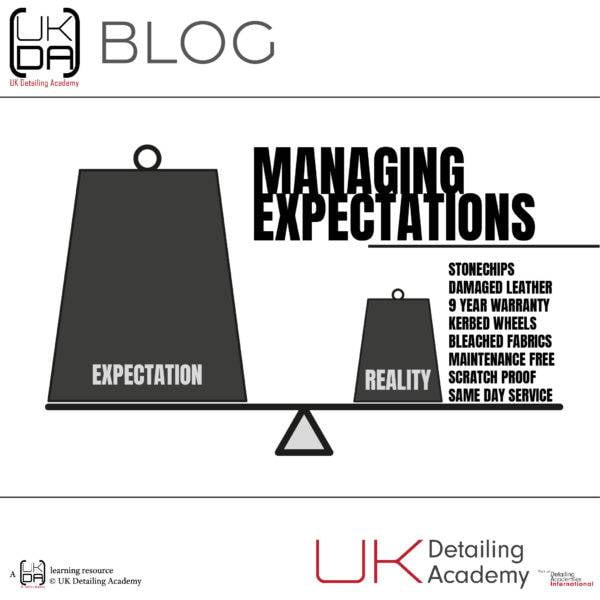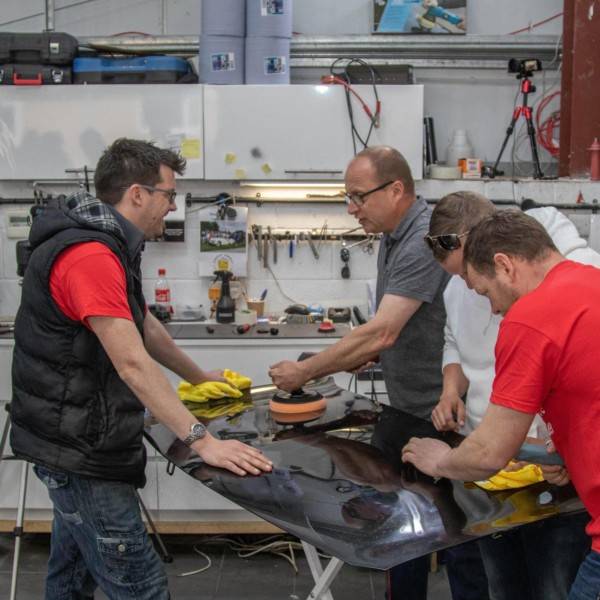
In a previous blog we talked at length about adding bolt-ons to a business to aid in short-term growth. This could be minor services such as convertible roof recolouring, brake caliper painting, sticker removal or wheel protector installation, for example. These are great at adding to a business model without extreme outlay or changing the way you work. We also had a few high investment options in there which are a step up from the others though. These add a string to your business which can operate in tandem, or completely isolated.
Think of them as an annexe, or a garden office – whilst part of the whole, they have independent value in isolation. You could also see them as setting up a second business, one that just happens to have a lot of the same clients as your existing company.
These “child businesses” (offshoots of a “parent company”) can be the next big step in a business empire. They’re not a “quick cash fix”, and often require investment – both financial and time – to take off. Once established, however, they are less of a trickle of work and more like a second river running parallel. If you don’t already have a detailing business, leather repair can be operated entirely as a stand-alone entity, and is great as a second income or a wholly isolated business model.
There are a few other options which generally suit an existing detailing business – PPF, PDR, alloy wheel refurbishment, SMART repair, Wrapping, and Window tinting – but by far the most natural addition seems to trend as Leather Repair. And for good reason.
Leather repair is in high demand as it ticks so many boxes for a detailing business addition.
- It’s relatively low cost to entry – when compared to equipment heavy plotters, paint booths, tools sets and space requirements of many of the other mentioned.
- You can start small and work up to larger jobs as your confidence grows, and as a time:reward ratio, leather repair bills out at around twice the value of detailing work, even with consumables added in.
- Courses are between three and five days long, and with practice, you can hit the ground running with repairs.
- Kit and consumables are less expensive – Whilst a full repairer’s kit is between £1500 and £2200, a lot of this is consumables which can earn back many times their value short term with smaller “per job” costs.
- You have a ready-made market for leather repair in detailing customers, and it can be offered as an on-demand upsell – as you have all the tools and consumables to hand.
In a recent survey of new-car buyers by market-research firm Strategic Vision, 53 percent of purchasers reported specifying leather, or imitation leather in their new car, up from 46 percent a decade earlier.
What’s involved?
As with any new skill, the basics come first.
Cleaning and maintenance – many “colour damage repairs” can actually be cleaned using specialist chemicals and techniques – from dye transfer to spills and marks, using techniques beyond basic leather cleaners, with upsells to tougher longer life protectants.
Theory. Identifying leather and the defect to repair. These can range from scuff and scrapes to holes and tears. As long as the damage doesn’t cross panels, it’s usually far more efficient to repair in-place than re-upholster – meaning happy customers and a quicker resolution.
Repairs. Filling, back patching, re-graining, repairing cracks, and restoring older leather surfaces to preserve, sanding, priming and masking.
Colour matching. It’s no exaggeration to say the correct colour matching is 90% of a successful leather repair. It could take anything from a few seconds if a base black-to-black match, up to an hour for a tricky, sometimes faded colours, but once accurate your repair becomes vastly simplified. You’re taught to match live by eye rather than rely on posted samples, for economic and efficient repairs – but if you get stuck the option is also there to have matched by a third party until you are confident in your skill.
All this is tied together with business and pricing, spray technique, and lots of practice sessions on live example items, so you learn on the surfaces you will be charging for once proficient.
What does it cost?
As the UK exclusive Colourlock trainers, UKDA’s three-day Colourlock Leather Repair Technician course costs £750.00 per person on one of our small group sessions and £1,375.00 as a one-to-one course.
Setup costs will depend on your existing equipment, but the master kit, containing everything needed from a tool and consumable point of view, costs £1600.00. You will need to equip yourself with a small spray gun, airbrush and compressor, a heatgun, and a few other small tools. Tools for removal and refitting of seats, steering wheels and other leather areas, such as door cards will become useful quickly, so having these on hand will be beneficial, but not essential until you are happy in your skillset to go live with your new business.
Interested? Why not start a chat with us, check out the course pages, and see if Leather Repair could be the start of something new and great for you.



